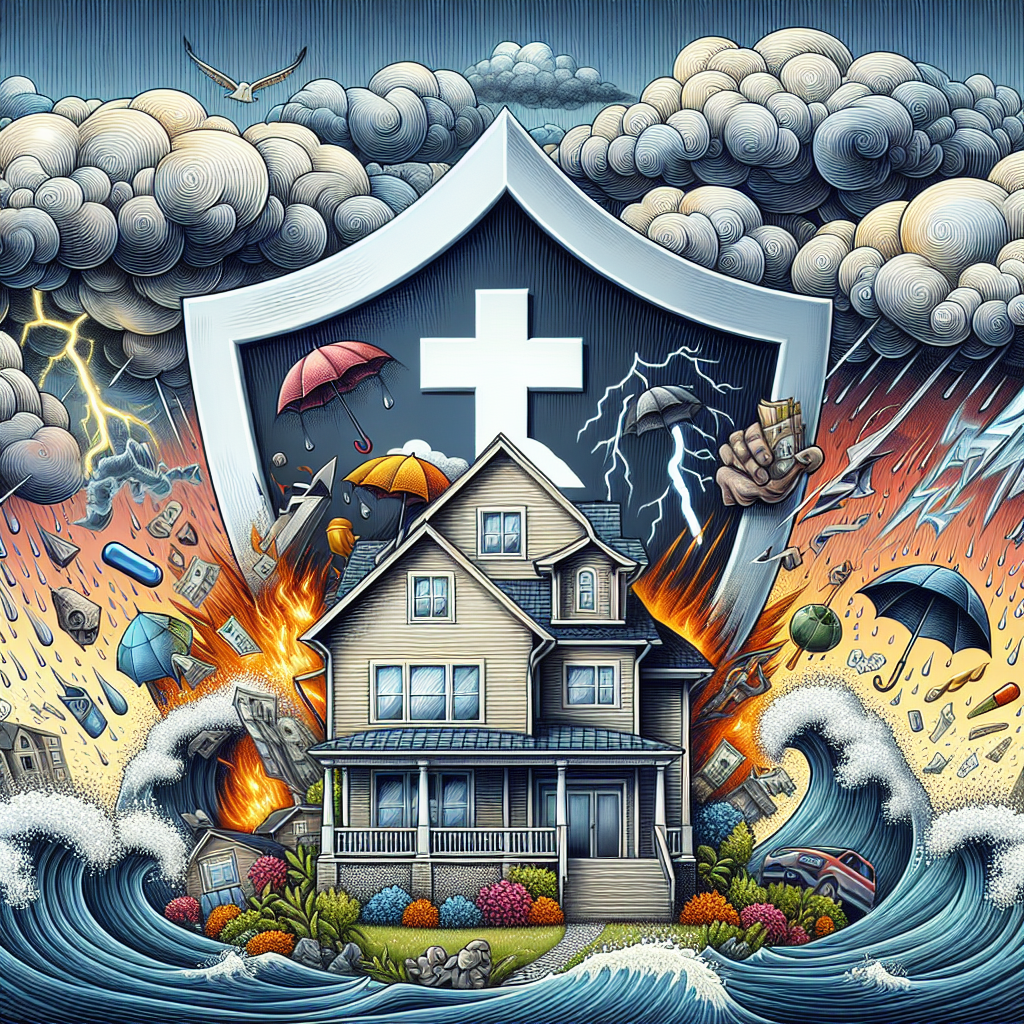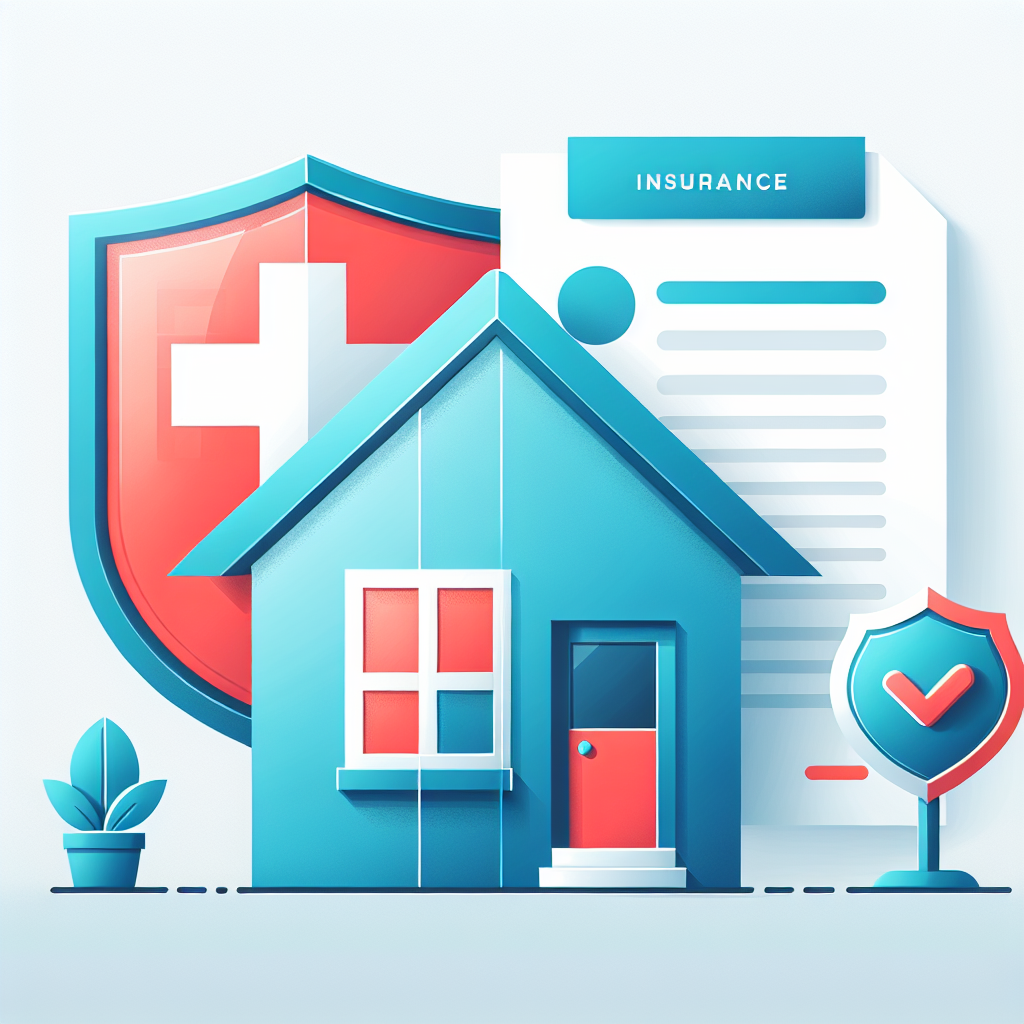Filed under Home Insurance on
Medical Payments Coverage in Home Insurance Explained

If a visitor trips on your front steps or a neighbor is accidentally bitten by your dog, the last thing you want is a dispute over medical bills. That’s where Medical Payments Coverage in Home Insurance steps in. This often-overlooked protection can help pay smaller injury-related expenses quickly—regardless of who was at fault—so you can focus on care and resolution, not conflict. In this guide, you’ll learn what it covers, how it differs from liability insurance, smart ways to choose limits, and practical steps to lower risk at home.
What is medical payments coverage?
In most homeowners policies (such as HO-3), “Medical Payments to Others” is a no-fault coverage designed to pay reasonable, necessary medical expenses when a guest is injured on your property. It’s commonly labeled as Coverage F, separate from Personal Liability (Coverage E). Think of it as a goodwill layer: it can handle first-aid, ambulance, X-rays, and similar costs quickly, without having to establish negligence.
Typical policy limits are modest—often $1,000, $2,000, $5,000, or $10,000 per person—precisely because it’s intended to resolve minor incidents before they escalate into claims or lawsuits. Crucially, it usually excludes injuries to you or members of your household; it’s for other people who get hurt in or around your insured location.
How Medical Payments Coverage in Home Insurance works
Unlike liability coverage, which requires fault and can address big-dollar claims, medical payments coverage can pay out promptly once an injury and eligible expenses are verified. This speed can prevent strained relationships and may reduce the chance a small issue becomes a legal matter. The insurer typically pays providers directly or reimburses the injured person for covered expenses up to the limit, and there’s generally no deductible.
Who is covered
- Guests and visitors injured on your property, regardless of fault.
- People injured off the premises in certain situations—such as injuries caused by your pet away from home—depending on your policy language.
- Not covered: You, your spouse, or resident family members. For them, health insurance applies.
When it applies
- Slip-and-fall on a wet floor during a dinner party.
- Dog bite to a passerby near your sidewalk.
- Cut from a broken fence or wound from a nail during a backyard gathering.
- Injuries involving scooters or small recreational devices around your property, with exclusions for motor vehicles and certain equipment.
What it covers—and what it doesn’t
Common covered expenses
- Ambulance and emergency room visits.
- Diagnostic imaging (X-rays, scans) and lab tests.
- Stitches, minor surgeries, and physician visits.
- Dental treatment from accidental injury.
- Medical supplies (splints, crutches) and some follow-up care.
Common exclusions and limitations
- Injuries to you or household members (this is for “others”).
- Intentional acts or criminal activity.
- Business or home-sharing activities without the proper endorsements.
- Injuries involving motor vehicles, aircraft, or certain watercraft (handled by auto or specialty policies).
- Professional services provided at your home.
- Hazards beyond your insured location unless specific policy conditions are met.
Policy wording matters. Some policies extend coverage to injuries caused by your personal activities off premises or by your dog away from home, while others are narrower. Review the definitions of “insured location,” “residence premises,” and any animal liability endorsements or exclusions.
Limits, costs, and deductibles
Most homeowners choose limits between $1,000 and $5,000, though many carriers offer $10,000 or more. There is usually no deductible for medical payments coverage. Increasing limits is often inexpensive—sometimes just a small annual premium difference—because the coverage addresses lower-severity claims.
Even though these limits are small relative to medical costs, they serve an important purpose: paying immediate, reasonable expenses quickly so a neighbor’s minor ER trip doesn’t become a major dispute.
Medical payments vs. personal liability
Medical payments and personal liability work together, but they are not the same.
- Fault: Medical payments is no-fault; personal liability requires you (or an insured) to be legally responsible.
- Purpose: Medical payments smooths out small claims; liability addresses larger, fault-based claims including pain and suffering.
- Limits: Medical payments limits are small and per-person; liability limits are much higher and apply per occurrence.
- Claims handling: Medical payments can pay quickly; liability claims often take longer due to investigations and negotiations.
If a claim is clearly beyond the med pay limit or involves significant damages, the liability coverage (Coverage E) becomes the main protection. For very large liability exposures, many homeowners add a personal umbrella policy to extend limits.
Real-world scenarios
- Slip on steps: A delivery driver slips on wet steps, twists an ankle, and needs X-rays, a brace, and follow-up. Medical payments can promptly handle the bills up to the limit, potentially avoiding a liability claim.
- Dog bite at the park: Your dog nips a jogger off premises. If your policy extends to injuries caused by your dog away from home, med pay can cover urgent care costs. If the injured party also claims wage loss or scarring damages, personal liability may come into play.
- Backyard party mishap: A guest cuts their hand on a broken glass tabletop. Med pay covers the ER visit and stitches. You also repair the hazard to prevent future incidents.
- Fallen tree branch: A neighbor helping you in the yard is struck by a branch and needs an urgent care visit and imaging. Med pay can help with immediate costs while the adjuster assesses whether broader liability is involved.
- Contractor injury: A handyman trips over your hose. Medical payments may provide quick medical help, but contractor injuries can be complicated. Professionals typically carry their own insurance; workers’ compensation may apply depending on the arrangement and state law.
How it coordinates with health insurance and Medicare
Because medical payments coverage is no-fault, an injured person’s provider may bill your homeowners insurer directly or the injured party may seek reimbursement. If the injured person has health insurance, the carriers may coordinate benefits behind the scenes. In some cases, your insurer may exercise subrogation—seeking reimbursement if another party ultimately bears responsibility.
For Medicare or certain health plans, rules can be strict about primary versus secondary payers. The key point: medical payments can offer immediate relief for eligible expenses while the broader insurance picture gets sorted out. Encourage transparency by collecting provider information and giving it to your adjuster early.
Choosing the right medical payments limit
Selecting the right limit depends on your household’s exposure to visitors and everyday hazards. Consider the following:
- Foot traffic: Do you host gatherings or have frequent deliveries?
- Pets: Some breeds may be excluded or require endorsements; all dogs increase exposure.
- Amenities: Pools, trampolines, play sets, fire pits, and uneven landscaping raise risk.
- Property features: Older steps, loose railings, cracked walkways, and poor lighting elevate fall risk.
- Local medical costs: Emergency care and imaging can be expensive even for minor injuries.
For many homeowners, $5,000 is a practical baseline. Households with more risk—pools, frequent parties, or high pedestrian traffic—often consider $10,000 if available. The incremental premium to raise the limit is commonly modest relative to the goodwill and speed of resolution it can buy.
Risk management: simple steps with big impact
- Lighting and visibility: Add motion lights on pathways and entryways; replace burnt-out bulbs promptly.
- Walkway maintenance: Repair cracks, secure loose stones, and clear debris after storms.
- Handrails and steps: Install secure handrails; use non-slip treads or paint on stairs.
- Seasonal hazards: Shovel and treat ice, and post temporary warning signs during wet or icy conditions.
- Pool and water safety: Self-latching gates, compliant fencing, pool alarms, and clear rules; keep rescue equipment visible.
- Pet protocol: Training, leashes, clear warning signs if needed; secure pets when visitors arrive.
- Yard and tools: Store tools properly; coil hoses; mark elevation changes.
- Document upkeep: Keep a simple log with dates and notes of maintenance and safety checks.
These steps reduce injuries and can strengthen your position if a liability claim arises. They also align with broader industry guidance on premises safety.
What to do if someone is injured at your home
- Ensure safety first: Call emergency services if needed and render reasonable first aid.
- Collect information: Names, contact details, a brief description of what happened, and any photos of the area.
- Preserve the scene: Don’t immediately fix or alter the hazard until it’s documented, unless safety requires it.
- Notify your insurer: Report the incident promptly and ask about Medical Payments Coverage in Home Insurance and next steps.
- Track expenses: Keep all bills and receipts; share provider information with your adjuster.
- Avoid admitting fault: Be empathetic and cooperative, but let the investigation determine responsibility.
Special situations to consider
Condo and renters policies
Condo (HO-6) and renters (HO-4) policies typically include a version of medical payments coverage for injuries at your unit. For condo owners, injuries in common areas are usually the association’s responsibility, not yours, although incidents inside your unit generally fall under your policy. Review association bylaws and your personal policy for clarity.
Short-term rentals and home-sharing
Short-term rental activity can change everything. Standard homeowners policies often exclude business-related claims. Some insurers offer home-sharing endorsements or separate landlord policies with their own med pay provisions. If you host paying guests, confirm that your coverage is designed for that exposure; platform guarantees are not the same as an insurance policy.
Domestic workers and contractors
If you regularly employ domestic workers, different rules may apply, including potential workers’ compensation requirements in some states. For contractors, rely on professional licenses, certificates of insurance, and written agreements that outline responsibilities. Medical payments coverage can respond to certain incidents, but it’s not a substitute for proper labor and risk arrangements.
Vacant homes and renovations
Vacancy and major renovations often trigger exclusions, coverage suspensions, or the need for a special policy. If your home will be empty or under construction for an extended period, talk to your agent about how Medical Payments Coverage in Home Insurance applies and whether you need a builder’s risk or vacant home policy.
Industry insights and trends
Medical costs have trended upward for years, and even minor injuries can result in substantial bills for imaging, urgent care, or ER visits. Insurance industry data from organizations like the Insurance Information Institute (Triple-I) and the National Association of Insurance Commissioners (NAIC) point to an environment where claim severity has generally increased across many lines. While medical payments claims are typically small, they don’t exist in a vacuum—rising healthcare prices, legal trends, and social inflation affect how carriers evaluate risk and price coverage overall.
Dog-related injury costs are a notable driver. Industry reports regularly show dog bite claims as a significant share of homeowners liability losses, with average costs per claim climbing over time due to medical care and legal outcomes. Even when an incident appears minor, having accessible med pay limits can help defuse tension and address immediate care.
The big takeaway: as costs rise, the relative value of a higher medical payments limit increases, especially for households with identifiable hazards like pools, uneven steps, or frequent visitors.
Common myths, clarified
- Myth: It covers my family’s injuries. Reality: It’s almost always limited to people who are not residents of your household.
- Myth: It replaces liability insurance. Reality: It complements it; liability addresses larger, fault-based claims.
- Myth: If I have health insurance, I don’t need med pay. Reality: Med pay is about helping others quickly, preserving goodwill and potentially preventing lawsuits.
- Myth: It’s expensive. Reality: Increasing limits is often low cost compared to the benefit of fast resolution.
- Myth: It only applies on my property. Reality: Policies may extend to certain off-premises injuries, such as those caused by your pet, depending on the wording.
FAQs
Is medical payments coverage required?
No, it’s optional in most homeowners policies, but widely included by default. Choosing an appropriate limit is up to you and your risk profile.
Will a med pay claim raise my premium?
Any claim can influence pricing at renewal, but small, well-documented medical payments claims are often viewed differently from large liability losses. Practices vary by insurer and state.
Can I offer med pay even if the person has health insurance?
Yes. Medical payments is designed to respond regardless of fault or other coverage. Coordination between carriers may occur behind the scenes.
Are funeral expenses ever covered?
Some policies include funeral expenses as part of covered medical costs, subject to limits. Check your specific contract and ask your agent for clarity.
How fast does it pay?
It can be relatively quick once necessary documentation is provided. Keeping organized records of bills, provider contacts, and the incident details helps speed things up.
How to review and optimize your coverage
- Pull your declarations page: Locate the medical payments limit and note any animal, pool, or trampoline endorsements.
- List your exposures: Pets, amenities, steps, frequent guests, and local conditions (ice, heavy rain).
- Discuss options: Ask your agent about raising the med pay limit and whether any exclusions apply to your situation.
- Bundle risk controls: Implement safety upgrades; some insurers may offer credits for certain improvements.
- Revisit annually: Homes and habits change—review coverage at least once a year or after renovations.
When to consider higher limits
It makes sense to increase limits when any of the following apply:
- You entertain frequently, host club meetings, or have teens with many visitors.
- You own a dog or other animals that interact with the public.
- Your property has steps, elevation changes, or older features awaiting upgrades.
- You have a pool, hot tub, trampoline, or play equipment.
- You live in an area with winter ice, heavy leaf fall, or frequent storms.
Medical Payments Coverage in Home Insurance is inexpensive peace of mind in these scenarios. While it won’t address every loss, it efficiently handles the early, practical costs that often dictate whether a situation escalates.
Practical documentation tips
- Keep a simple safety checklist and update it each season.
- Photograph repairs and upgrades with dates.
- Save vendor invoices for maintenance and hazard mitigation.
- After an incident, write a brief factual summary while details are fresh.
Good documentation supports quick payment decisions under medical payments coverage and strengthens defense if a liability claim arises later.
Key takeaways
- Medical payments is a no-fault coverage for guests’ injury expenses, separate from liability.
- Limits are modest but impactful; there’s usually no deductible and payment can be quick.
- It’s not a replacement for liability coverage; the two work together.
- Raising limits is often low cost and makes sense for homes with more foot traffic or added hazards.
- Simple safety steps reduce risk and help avoid claims altogether.
The bottom line
Small injuries can turn into big disagreements when bills start arriving. Medical Payments Coverage in Home Insurance gives you a straightforward, no-fault way to take care of guests and de-escalate tense situations. By choosing sensible limits, maintaining a safe property, and understanding where med pay fits alongside personal liability, you’ll be prepared for life’s minor mishaps—and better protected if a claim grows beyond the basics.
If you haven’t checked your policy in a while, ask your agent to review your limits, exclusions, and endorsements. Confirm whether your policy covers pet-related injuries off premises, short-term rental activity, or special features like pools and trampolines. With a few adjustments, Medical Payments Coverage in Home Insurance can become one of the most practical tools in your protection plan.





